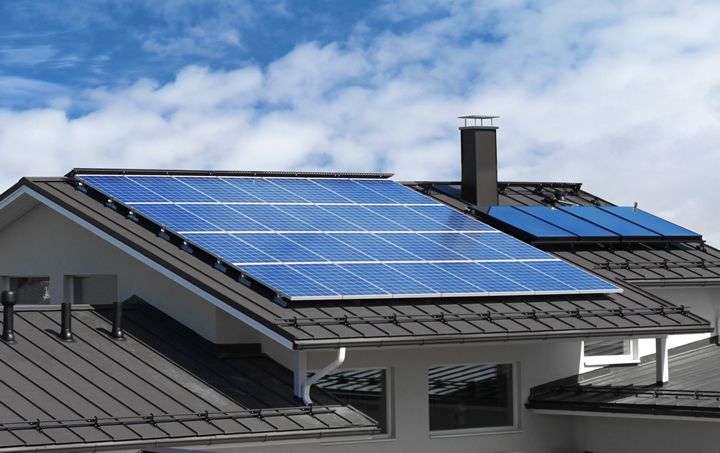I have a feeling that 2024 will be a year in which solar companies realize that the generational divide does exist and plays a huge part in how and why certain generations are opting for solar energy.
 Homeowner Education Key to Seeing Full Inflation Reduction Act Benefits
Homeowner Education Key to Seeing Full Inflation Reduction Act Benefits

Q&A with Paul Grana, General Manager Helioscope | Aurora Solar
Tell us about yourself and your role with Aurora Solar.
I’m the Co-Founder and General Manager of HelioScope at Aurora Solar. For those who might not know, HelioScope provides commercial solar installers with an intuitive cloud-based design platform that reduces design costs by 90%. It helps streamline solar design and sales, cuts soft costs, and accelerates project development. Before joining the team, I was the co-founder/CRO of Folsom Labs (which made HelioScope software and was acquired by Aurora Solar in 2021). Before that I was on the hardware side of the industry, leading Product Marketing at Tigo Energy. Lastly, I hold an SB in Mathematics from the University of Chicago, and an MBA from Harvard Business School. In my free time, you’ll find me chasing my kids, or soapstone carving.
According to a recent American Clean Power report, over $270 billion has been invested in clean energy projects and manufacturing facilities since the passage of the Inflation Reduction Act. What have been the top trends you’ve noticed in the last year as a result of the IRA, and why are they worth watching?
I’m seeing three big trends this year as a function of the IRA:
Certainty, and a new focus on adders: With the IRA extending the 30% tax credit out for 10 years, this gives project developers (and financiers) valuable certainty about the investments they are making. Markets hate uncertainty, and the top-level value of the investment tax credit (ITC) is predictability. On top of that, the extra adders are making every solar developer re-assess whether they can (re)orient their business to focus on energy communities or low-to-moderate income (LMI) customers to unlock these additional adders. If those companies are not already serving those communities, then a transition like that isn’t to be taken lightly - but is worth considering given the magnitude of the incentives.
Domestic content: Speaking of adders, the domestic content incentives have triggered an absolutely unprecedented level of investment in domestic manufacturing. But this also puts pressure on solar developers to build relationships with original equipment manufacturers (OEMs) who can provide them with domestically-made products - solar developers will be able to leverage those supply chain relationships into a price advantage in the market if they can get access to the first supply of domestic content equipment.
Tax credit transferability: The final change we’re just starting to see is the impact of transferability on the US solar market. The ability to sell tax equity has the potential to unlock significant financing activity, particularly for small- and medium-sized commercial solar projects. There are several companies offering platforms for transferring these tax credits, including Reunion and Evergrow.
What should our readers expect to see in the coming year, in relation to solar energy? What tips can you share that will help them navigate the rapidly changing solar industry?
I have a feeling that 2024 will be a year in which solar companies realize that the generational divide does exist and plays a huge part in how and why certain generations are opting for solar energy. Our recent data suggests nearly half of Baby Boomers (49%) said that they would never reach out for more information about solar panels via social media, while Gen Z was more open to leveraging social media as an educational tool, with (82%) noting they might be open to reaching out to learn more via social media. With this in mind, every solar company should start their marketing strategy by thinking through which buyers they are targeting, and then using that to determine their marketing mix - rather than vice versa (letting the marketing mix define the customers that they acquire).
Aurora’s Solar Industry Snapshot found that 50 percent of homeowners find it challenging to determine if an installer is legitimate. What can solar companies do to ensure that customers feel secure in moving forward with solar installations?
Great question. The first step should focus on the fundamentals: doing great work, providing great customer service, and then asking those happy customers to provide references and referrals. If you have a stellar track record and/or years of history, showcase those prominently in your sales pitch.
However, a new company won’t have much of a track record - in those cases, the key is education. Both in educating the homeowner, and in building and showcasing your education credentials, such as the North American Board of Certified Energy Practitioners (NABCEP) certification.
This homeowner educational component will empower homeowners to understand the value of solar, the benefits of the transition, and even answer specific questions including how solar panels will work with their current energy storage and/or electric vehicle setup. Most importantly, solar companies should make their customers feel comfortable and included in the process, so they can voice any immediate questions or concerns.
What can installers do to improve their reputation in an industry that is sometimes viewed as ‘spammy’?
In this year alone, there has been a flurry of news about deceptive sales tactics that have left homeowners upset due to over-promised, unachievable results or a slew of issues when it comes time for a project to be completed. Our data found that (87%) of consumers believe a solar company’s reputation is important when deciding whether or not to work with them. Therefore, as someone who has been in the industry for over fifteen years, I believe that installers can improve their reputation by focusing on being a good ambassador for the solar industry. It isn’t just enough to do good work; solar developers should seek to raise their profile in their community. This could take many forms: tabling at local farmers’ markets, sponsoring little league baseball teams, or providing free education on how solar works at the local community center. This will help solar installers make a strong first impression on homeowners and meet them where they are.
What tools do solar salespeople need for solar tools to be effective in the growing solar market? What changes have you witnessed in the past few years that make technology so critical?
As much as it seems like the solar industry is changing, homeowner expectations are changing even faster. Things like a professional online presence, an electronic proposal, e-signature, and online customer references have become table stakes.
 The good news is that technology, like Aurora Solar, is helping to make the sales process easier, faster, more professional, and incredibly accurate. Having the proper technology in place takes the guesswork out of proposals and installations. This level of transparency increases trust. The growth of the solar industry can be accelerated by modernizing sales processes to stay ahead of the competition.
The good news is that technology, like Aurora Solar, is helping to make the sales process easier, faster, more professional, and incredibly accurate. Having the proper technology in place takes the guesswork out of proposals and installations. This level of transparency increases trust. The growth of the solar industry can be accelerated by modernizing sales processes to stay ahead of the competition.
What can solar companies do to deliver a faster, easier, and more customized sales experience to close successful deals?
Solar companies who want to sell with credibility must implement innovative tools that will help ensure they are able to consistently and confidently close deals. Therefore, companies must be willing to invest in tools, such as Aurora Sales Mode, a proposal tool that helps deliver a faster, easier, and more customizable sales experience that helps teams adapt to ever-changing market conditions and close deals with confidence. Backed by Aurora's industry-leading design technology, Sales Mode empowers your sales team to sell with credibility and uphold the reputation they’ve worked so hard to build.
The content & opinions in this article are the author’s and do not necessarily represent the views of AltEnergyMag
Comments (0)
This post does not have any comments. Be the first to leave a comment below.
Featured Product

